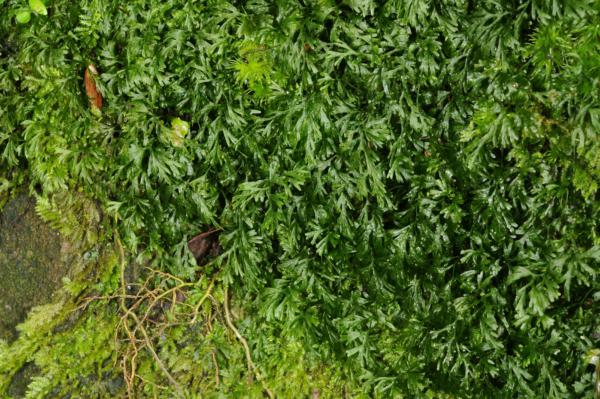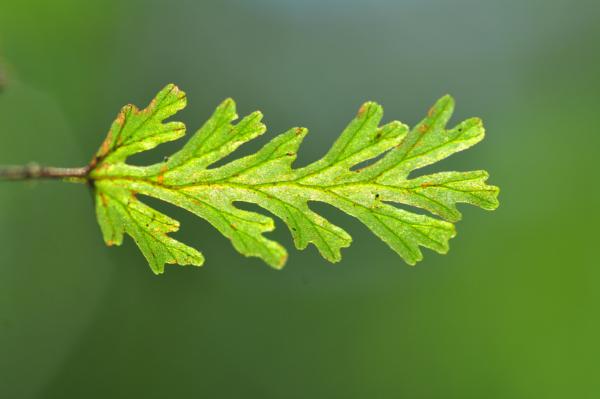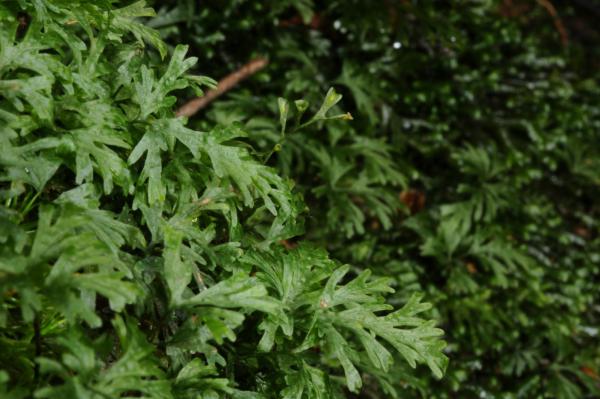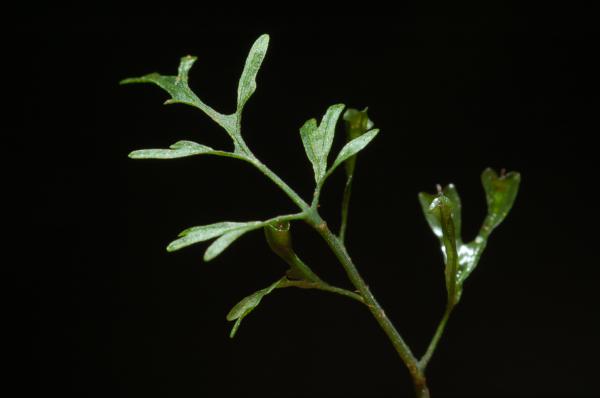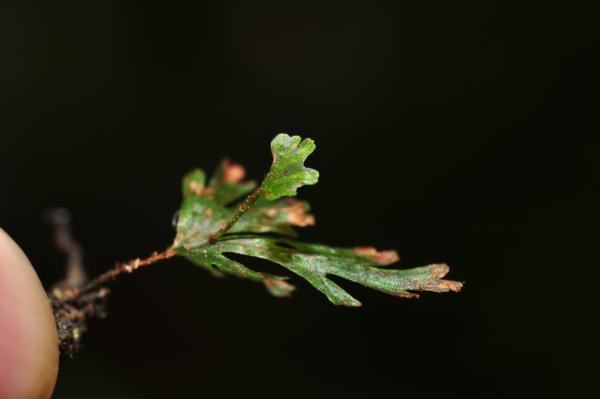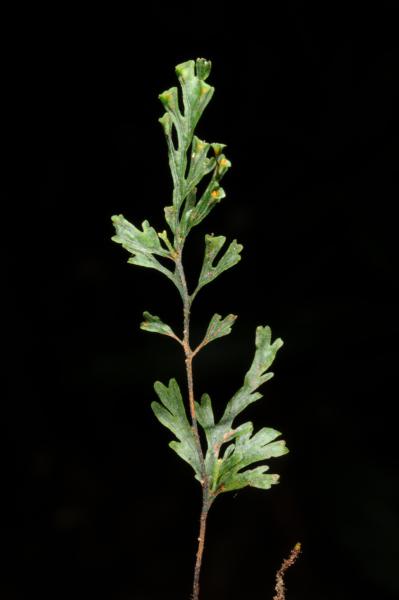
Crepidomanes minutum (Blume) K.Iwats.
Family
Hymenophyllaceae
Nomenclature
Crepidomanes minutum (Blume) K.Iwats., J. Fac. Sci. Univ. Tokyo, Sect. 3, Bot. 13: 524. 1985; Tagawa & K.Iwats., Fl. Thailand 3: 613. 1989; Boonkerd & Pollawatn, Pterid. Thailand: 71. 2000. – Trichomanes minutum Blume, Enum. Pl. Javae 2: 223. 1828; Holttum, Rev. Fl. Malaya ed. 1, 2: 96. 1955 [‘1954’]. – Gonocormus minutus (Blume) Bosch, Hymenophyll. Javan.: 7, t. 3. 1861; Copel., Philipp. J. Sci. 67: 57. 1938; Ching, Fl. Reipubl. Popularis Sin. 2: 175, pl. 12, f. 1–6. 1959; Tagawa & K.Iwats., SouthE. Asian Stud. 5: 40. 1967.
Trichomanes saxifragoides C.Presl, Hymenophyllaceae: 16, 39. 1843; E.Smith, J. Siam Soc. Nat. Hist. Suppl. 8: 2. 1929; Sledge, J. Linn. Soc. Bot. 60: 298. 1968. – Gonocormus saxifragoides (C.Presl) Bosch, Hymenophyll. Javan.: 9. 1861; Tagawa & K.Iwats., Fl. Thailand 3: 80. 1979.
Trichomanes parvulum Blume, Enum. Pl. Javae: 223. 1828, non Poir. 1808; Bedd., Handb. Ferns Brit. India: 39, f. 18. 1883; Copel., Philipp. J. Sci. 51: 145, pl. 5. 1933; Tardieu & C.Chr., Fl. Indo-Chine 7(2): 65. 1939.
Trichomanes proliferum Blume, Enum. Pl. Javae.: 224. 1828; Bedd., Handb. Ferns Brit. India: 39. 1883; Copel., Philipp. J. Sci. 51: 150. 1933; Tardieu & C.Chr., Fl. Indo-Chine 7(2): 66. 1959; Holttum, Rev. Fl. Malaya ed. 1, 2: 97, f. 33. 1955 [‘1954’]. – Gonocormus prolifer (Blume) Prantl, Unters. Morph. Gefasskrypt. 1: 51. 1875; Ching, Fl. Reipubl. Popularis Sin. 2: 178, pl. 12, f. 7. 1959; Tagawa & K.Iwats., SouthE. Asian Stud. 5: 40. 1967; Tagawa & K.Iwats., Acta Phytotax. Geobot. 23: 52. 1968; Tagawa & K.Iwats., Fl. Thailand 3: 81. 1979.
Gonocomus teysmannii Bosch, Hymenophyll. Javan.: 10, pl. 5. 1861; Tagawa & K.Iwats., SouthE. Asian Stud. 5: 40. 1967.
Gonocormus siamensis Tagawa &. K.Iwats., Acta Phytotax. Geobot. 22: 99, f. 3. 1967; SouthE. Asian Stud. 5:40. 1967; Tagawa & K.Iwats., Fl. Thailand 3: 81. 1979.
Description
Rhizome long creeping, very slender, about 0.2 mm diam., covered with dark brownish hairs about 0.5 mm long, the hairs caducous. Stipes slender, wingless to very narrowly winged only on the uppermost part, 1–3 cm long, rarely proliferous near base. Laminae seemingly flabellate to oblong to bipinnate, irregularly branching dichotomously or with short main axis, 1–5 cm long, often wider than long, proliferous or not; pinnules simple or lobed into two to five segments, the segments round to acute at apex, entire, narrow, with a single veinlet, about 0.8 mm wide, the margin entire, thickened and somewhat curved inwardly. Sori at apices of ultimate segments; involucre tubular, winged, the mouth subtruncate or dilated.
Distribution in Thailand
NORTH-EASTERN: Loei; EASTERN: Nakhon Ratchasima, Ubon Ratchathani; SOUTH-WESTERN: Phetchaburi, Prachuap Khiri Khan; SOUTH-EASTERN: Prachin Buri, Trat; PENINSULAR: Ranong, Surat Thani, Phangnga, Phuket, Krabi, Nakhon Si Thammarat, Phatthalung, Trang, Yala, Narathiwat.
Wider Distribution
Old World tropics, east to Polynesia and north to Japan.
Ecology
On mossy tree trunks or rocks, fairly common in mixed or evergreen forest at various altitudes.
Proposed IUCN Conservation Assessment
Least Concern (LC). This species is widespread and not under any immediate known threat.
Voucher specimens - Thailand
Middleton et al. 5190, Ubon Ratchathani, Phu Chong Nayoi National Park (E); Middleton et al. 5411, Phatthalung, Lan Mom Jui Waterfall (E).
Habit
Sterile frond
Habit with erect fertile frond
Fertile frond
Gemma
Fertile frond
Site hosted by the Royal Botanic Garden Edinburgh. Content managed by Stuart Lindsay, Gardens by the Bay, Singapore and David Middleton, Singapore Botanic Gardens. Last updated 24 January 2012
